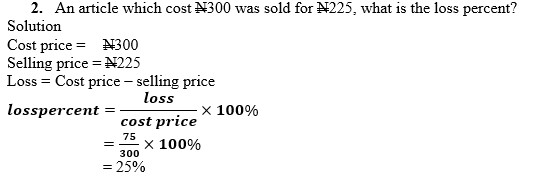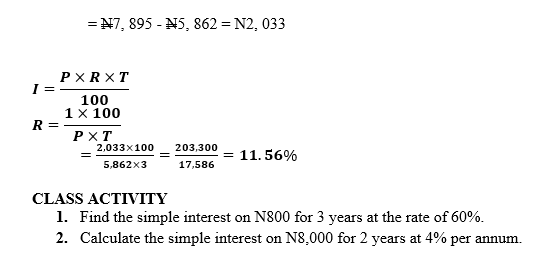When any transaction is done, we either make profit or a loss. When an article is sold at a price greater than the price it was bought, then a profit is made. On the other hand, if an article is sold at a price less than the cost, we have made a loss.
Hence,
Profit = selling price – cost price
Loss = Cost price – selling price
In commercial transactions, profit and loss are usually expressed as a percentage of the cost price






COMPOUND INTEREST:
In compound interest, interest is calculated and added to the principal at the end of each interval, thus the principal increases and so the interest becomes larger for each interval. Most saving schemes give compound interest not simple. The total value at the end of the investment is the compound amount.
Thus,
Compound amount = Compound interest + Principal
Example:


CLASS ACTIVITY
DEPRECIATION
Most of items such as radios, cars clothing, houses, and electrical goods lose value as time passes. This loss in value is called depreciation. Depreciation is usually given as a percentage of the item’s value at the beginning of the year
Example:

INFLATION
Due to rising prices, money loses its value as time passes. Lose in value of money is called Inflation. Inflation is usually given as the percentage increase in the cost of buying things from year to the next.
Example:
Solution:

PRACTICE EXERCISE
ASSIGNMENT
Read our disclaimer.
AD: Take Free online baptism course: Preachi.com 